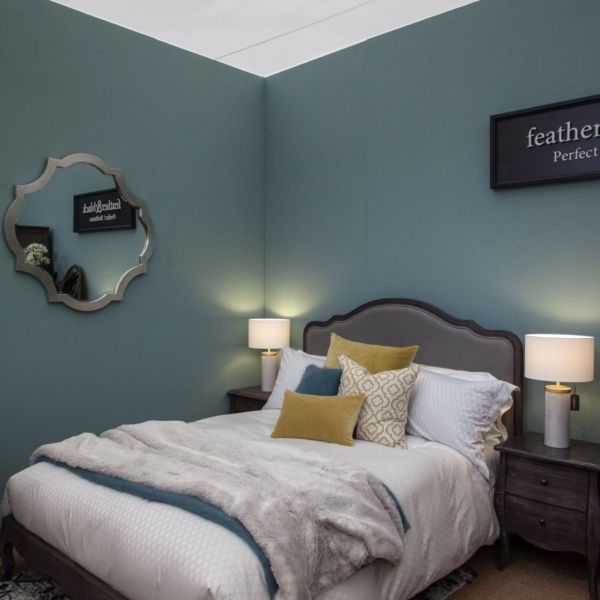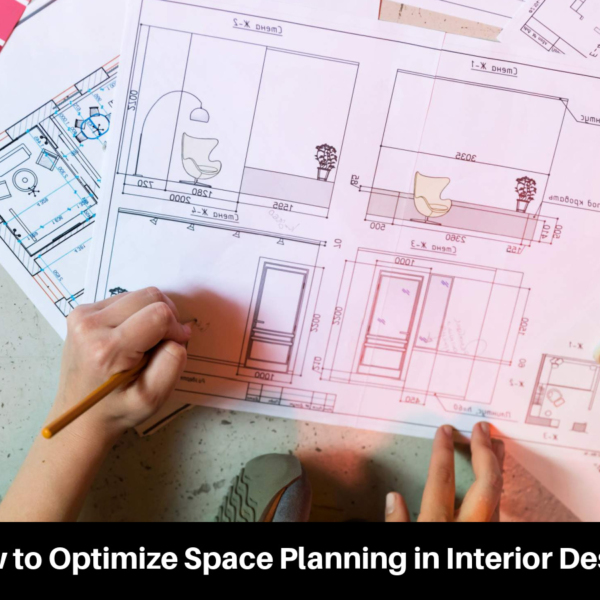In the realm of interior design, small living rooms present a unique challenge; how to maximize space, functionality, and beauty within limited constraints. Traditional interior design guidelines also apply to small living spaces, dictating how they should be furnished and arranged within these limitations.
These interior design guidelines for small living rooms seem outdated as contemporary interior design starts to showcase greater creativity and individual expression.
These rigid guidelines are being reconsidered and replaced with a more flexible, personalized approach tailored to the diverse needs and preferences of the home’s occupants.
Many outdated design guidelines for compact living rooms are being reevaluated. By revisiting these design principles, architects and homeowners can make the most of their small living spaces and create visually beautiful but comfortable designs.
Avoid Dark Colors in Small Living Rooms

The practice of not using dark colors in small rooms stems from the belief that light colors visually expand the space and make it feel more airy and spacious. Contrary to popular perception, dark colors can enhance the ambience of small living rooms in a variety of ways.
Dark colors cultivate an atmosphere of depth and intimacy. Rich and dark colors such as charcoal, forest green, navy, and brown evoke a sense of calm luxury and transform a room into a cozy retreat. Dark colors like these can also conceal surface flaws that are more noticeable in light rooms. Bright tones, like metallics or light colors, create a pleasing contrast with dark room colors. A designer can achieve a harmonious room composition by carefully balancing dark and light colors, elements, textures, and finishes. This maximizes the visual impact of the room.
Use Small-Scale Furniture

A common design strategy for small living spaces is to limit the furniture in the room to small pieces. This rule ensures that the living room is not overcrowded and that the design is appropriate for the space. This rule has evolved to acknowledge that certain large-scale furniture can improve the functionality and aesthetics of small living spaces.
While it is still essential to avoid overcrowding a space, incorporating a few pieces of large furniture can create more visual interest. For example, a large sofa can serve as a striking focal point and provide ample seating without overwhelming the space. Large furniture pieces can often complement a room’s architectural features and functionality. The key is to incorporate a mix of pieces to create a sense of balance and harmony.
Keep the Design Minimal

Many homeowners feel that keeping a small living room design minimal is best for preventing visual clutter and creating a more spacious looking room. One of the principal drawbacks of minimal designs is that they can feel sterile and lifeless. Furthermore, insisting on minimalist style design can inhibit innovation and personal expression.
A better approach for envisioning a small living room is to consider the taste and style of the home. By embracing warmth, personality, and creativity, homeowners and designers can cultivate living spaces that are not just visually appealing but also reflective of their own personalities and lifestyles.
Avoid Large or Heavily-Patterned Rugs

One popular design technique for small living rooms is the use of small to mid-sized rugs in light or neutral hues. While these standard sizes and colors may work well in many small living rooms, this rule is now recognized as too restrictive for every design. Large rugs in small rooms help to ground the space and create cohesion because they visually connect all of the furniture in the room. By providing a cohesive foundation for the design, the space is visually expanded and appears more connected.
Rugs with vibrant colors and patterns help to draw attention away from the room’s small size. By complementing the rug motif with throw pillows, upholstery, curtains, and artwork, homeowners can create a cohesive design that feels curated and intentional.
Keep Patterns Simple

Avoiding strong and competing patterns in a small room was thought to be a good way to keep things simple and cohesive. For small living rooms, this is an outmoded design strategy, primarily because it can lead to a boring and uninspired design. A design that lacks pattern, whether in the form of textiles, wallpaper, or decorative accents, may fail to capture attention and stimulate the senses.
Patterns can provide an avenue for showcasing unique preferences and styles. There are numerous pattern options available, ranging from bold stripes to delicate florals and abstract motifs. Different patterns can also be used to alter visual perception and expand space. Vertical patterns, such as stripes, make a room appear taller, whereas horizontal patterns create the impression of greater width.
Paint Ceilings White to Visually Extend the Room

Painting ceilings white has long been a popular design strategy in the home. Not only is this a simple decision that is cohesive, it is one that creates the illusion of height, brightness, and spaciousness. While white ceilings are common, they may not be the best option for all rooms. White ceilings reveal every surface flaw, including those associated with imperfections such as cracks or unevenness. They may also show signs of wear over time, such as discoloration and staining.
Designers and homeowners are embracing new possibilities for ceilings. They are adding color, pattern, and texture in a variety of ways that enhance the overall design. Using materials like paint, wallpaper, and wood are all valid strategies to make the room feel more cozy, unique, or custom.
Maximize Multi-Functional Furniture

While it is true that multipurpose furniture can be useful in small spaces, this should not be an excuse to purchase furniture that will not fit in the room. Choosing multipurpose furniture frequently means sacrificing comfort in favor of adaptability. These items are often quite large, making them difficult to maneuver in a small space. You may also have to compromise on your design preferences because styles for these pieces are limited.
A better design strategy for small living rooms is to buy pieces that you love, balancing design and adaptability. You will be able to create a space that looks better and makes you happier, even if some functionality will have to be sacrificed.
Keep the Curtains Minimal

While minimal curtain styles are popular in contemporary design and work well for letting in more light, they may not always be the best option for a small living room. Some small living rooms work better with more substantial curtain options to anchor the space. It is vital to consider your specific windows and determine how window coverings will work to enhance the function of the room. Minimal window coverings may not provide the privacy you need or help elevate the style of the room.
Many experts recommend hanging curtains above the windows to visually expand the room. If you want to use a curtain with a pattern, opt for a smaller and more delicate pattern that you repeat in other parts of the room. This will provide color and texture without overwhelming the room.
Avoid Oversized Wall Art

Using small or standard-sized wall art in a small room is a strategy for reducing the overwhelming nature of wall art while maintaining a sense of proportion in the space. However, many designers are becoming increasingly interested in the dramatic appeal of large wall art and how it can transform any room.
Like all static design strategies, this one restricts freedom of expression, but it misunderstands how oversized wall art can make a room appear larger than it is. By drawing attention away from the room’s size and toward the visually impactful art, it can become a powerful focal point, making the space feel spacious and expansive. Additionally, it can offer a stimulating topic of discussion that leaves a lasting impression on visiting guests.


